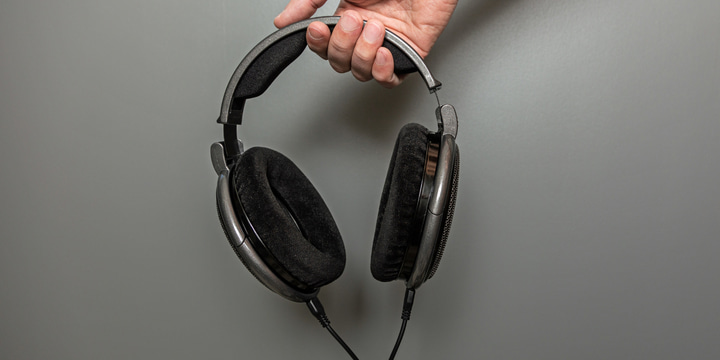Open-back vs Closed-back Headphones Explained

If you’re interested in learning more about how (gaming) audio works, it’s important to know about the different types of headphones. When reading about headphones, you might come across these terms, and if you’re looking to spend your hard-earned cash on a new piece of audio equipment it’s important to know about the differences between open-back and closed-back headphones. In this article, we’ll tell you about the pros and cons of each type so that you can find out what suits your needs best.
If you want the short answer, it’s quite simple: closed-back headphones’ ear cups are completely sealed and solid, while open-back headphones have openings in the ear cups. Both designs have their uses, which we’ll explain below.
What is a Closed-Back Headphone?
If you’re a gamer, you’ll have mostly used closed-back headphones, since the vast majority of gaming headsets use a closed-back design. Using a closed-back design means that you, the listener, are completely sealed off from your surroundings, which is obviously great for sound isolation and leakage purposes. If you’re gaming, you’ll naturally want to eliminate any distractions so it makes sense that a ton of gaming-focused headsets and headphones use a closed-back design.
There are some drawbacks to using this design, too. For starters, closed-back headphones won’t sound as natural and ‘wide’ as open-back headphones. That’s because sound has nowhere to go but right into your ear canal. In real life, sound can obviously travel in all directions, and open-backed headphones are much better at recreating that sensation due to the fact that they allow sound to leak out.
The closed-back enclosure also creates a ‘wall’ for sounds to bounce off of, which can make them sound a little messier and, as mentioned before, less natural. Closed-back headphones also generally produce a deeper bass, since the soundwaves that are making up the bass have no way to escape and thus go directly into your ear.
Closed-back headphones can also be a bit more cumbersome to wear due to their heavier weight, and seeing as there’s not a lot of ventilation they can also make your ears a bit toasty if you live in a warmer climate.
Summarizing, we can say that closed-back headphones are great choices for people who want to be closed off from the outside world while using the headphones and/or for people who don’t want their sound to leak to the outside world. That’s also the reason that a lot of studio headphones are closed-back: it’s so that the sound from the recording artist’s monitor/backing track doesn’t leak into the recording microphone. Not only musicians can benefit from using closed-back headphones, though: if you’re listening to your music with other people around (on the train, in a living room, …) then those people will thank you for using a closed-back design.

What is an Open-back Headphone?
Open-back headphones have holes that allow air to pass through them in the ear cups and are known for their natural, high fidelity sound. This might sound counter-intuitive if you’re just learning about audio, but it makes a ton of sense: if you’re listening to music being performed by someone in front of you, the sound travels all around you and has the ability to interact with the room. Your ears are ‘out there,’ so to say, and part of the environment. Open-backed headphones replicate this sensation way more accurately than closed-back headphones, which can (we’re exaggerating here for illustration purposes) sound like you’re listening to music inside a kettle.
Open-back headphones are also more breathable than closed-back headphones. That’s simply because they allow fresh air to reach your ears, which obviously isn’t possible if you’re using a closed-back pair of headphones.
All of these advantages do come at a price, and that can (sometimes) be taken quite literally. Open-back headphones are generally aimed more towards audiophiles and are thus more expensive, but this isn’t always the case. What is always the case is that they allow a lot of external noise in and they leak quite a bit of sound outwards, so if you’re using them in noisy environment or you don’t want to disturb the people around you these are definitely not a good choice.
In summary: open-back headphones are a great choice for people who prioritize sound quality over almost everything else, but they’re not the best choice if you’re almost never in quiet environments.
Conclusion – Open-back vs Closed-back Headphones
As you’ve probably been able to tell, there is no ‘best’ headphone type. Both types have their distinct advantages and disadvantages, so which one to get will greatly depend on your own personal preferences and, perhaps even more so, the environment that you will be using the headphones in.


